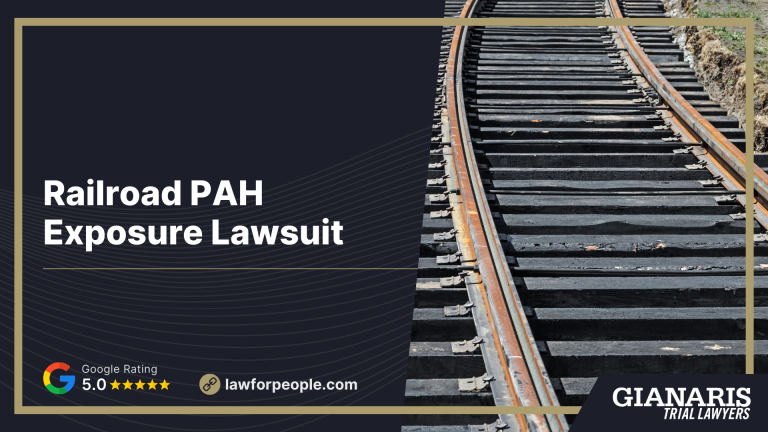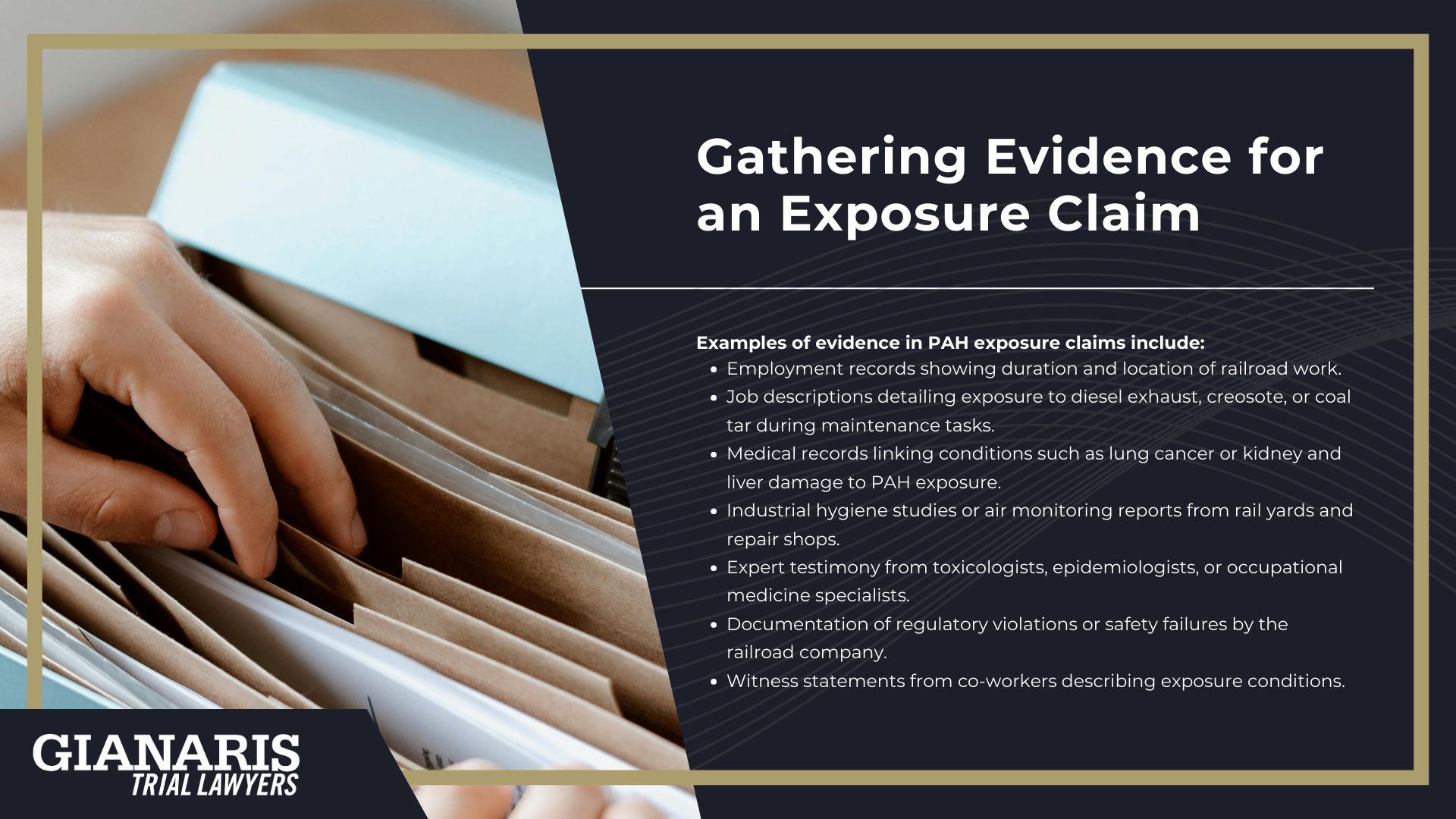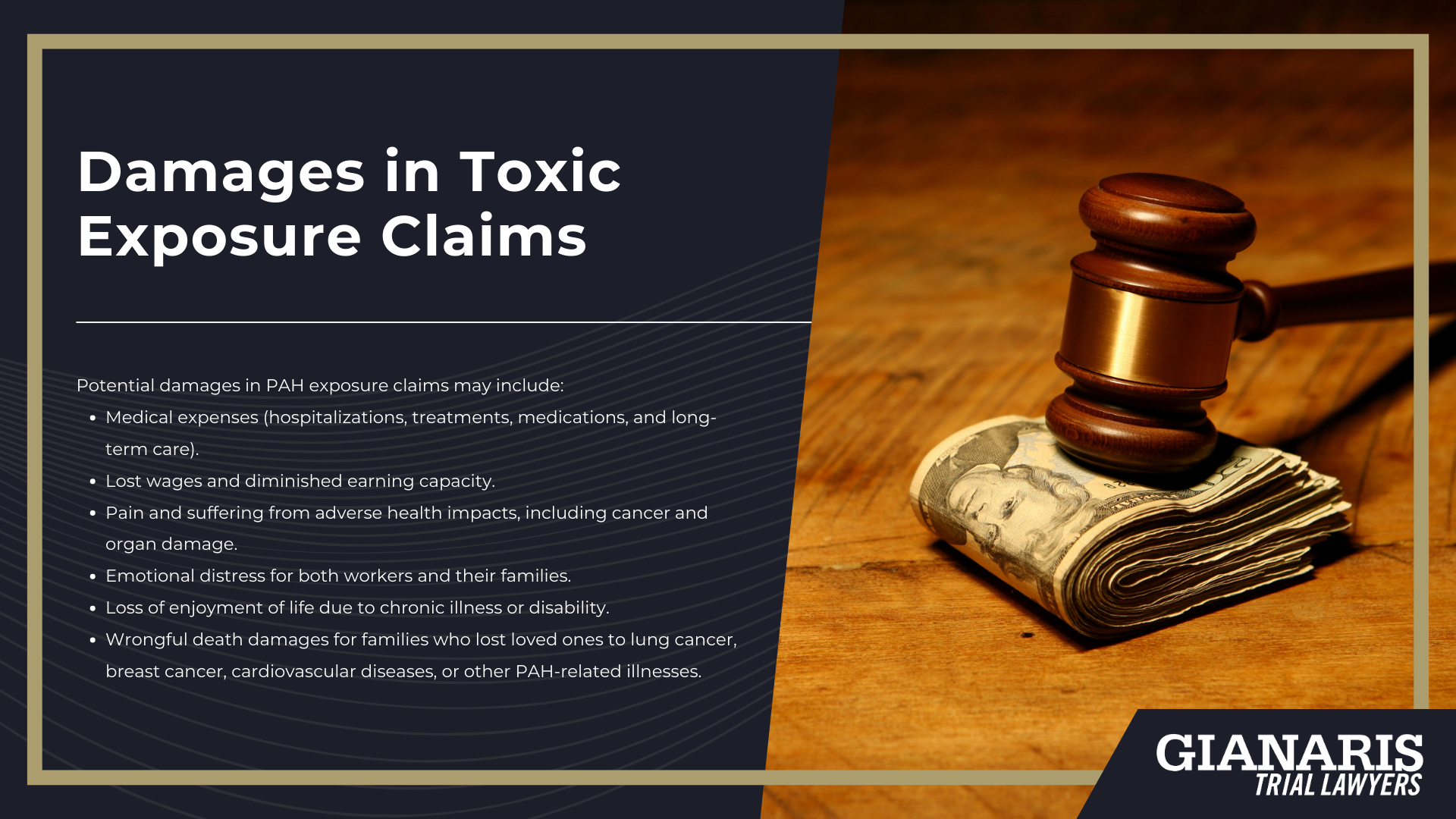Polycyclic aromatic hydrocarbons (PAHs) are a group of organic substances formed during incomplete combustion of coal, oil, wood, or other carbon-based materials.
In the railroad industry, workers may be exposed to carcinogenic PAHs through multiple sources tied to day-to-day operations and industrial processes.
The World Health Organization (WHO) has classified certain PAHs as human carcinogens, and both epidemiological studies and animal studies confirm their link to cancer and other serious health outcomes.
Railroaders face risks through direct occupational exposure, as well as indirect pathways when PAHs contaminate the environment.
One major source is diesel exhaust, a constant byproduct of locomotive engines, which releases atmospheric polycyclic aromatic hydrocarbons that can be inhaled over years of work.
PAHs are also present in coal tar and creosote, substances historically used for wooden railroad ties and infrastructure preservation, which can expose workers through skin contact and inhalation.
Contaminated soil near railyards, spills, and waste disposal areas can further increase human exposure.
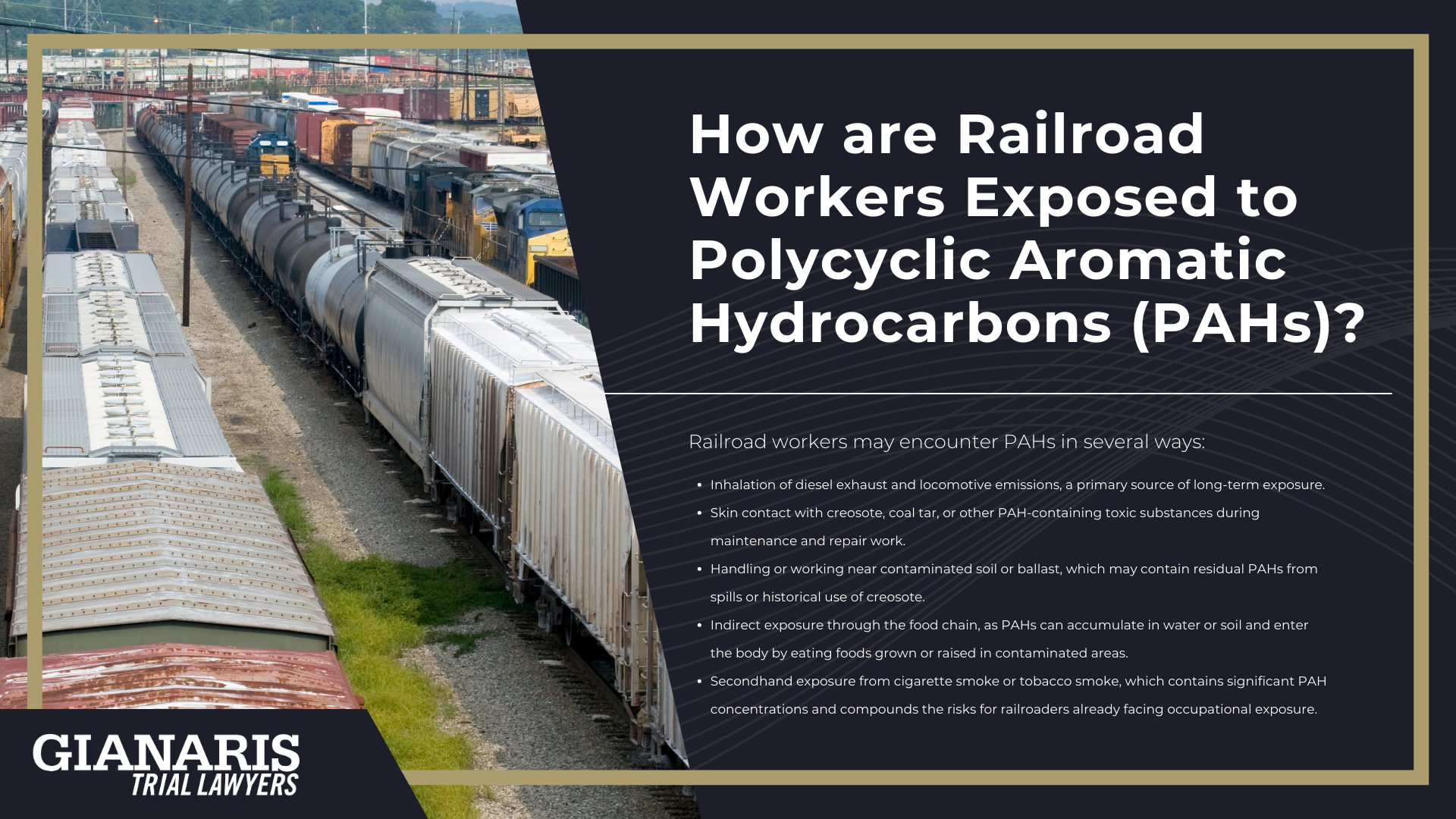
Railroad workers may encounter PAHs in several ways:
- Inhalation of diesel exhaust and locomotive emissions, a primary source of long-term exposure.
- Skin contact with creosote, coal tar, or other PAH-containing toxic substances during maintenance and repair work.
- Handling or working near contaminated soil or ballast, which may contain residual PAHs from spills or historical use of creosote.
- Indirect exposure through the food chain, as PAHs can accumulate in water or soil and enter the body by eating foods grown or raised in contaminated areas.
- Secondhand exposure from cigarette smoke or tobacco smoke, which contains significant PAH concentrations and compounds the risks for railroaders already facing occupational exposure.
Studies published in Environmental Health Perspectives have shown that PAHs are not limited to one pathway but accumulate across multiple exposure routes.
Prolonged long-term exposure can lead to an increased risk of chronic illnesses, including lung cancer, kidney and liver damage, and cardiovascular diseases.
Since PAHs are persistent in the environment, they represent an enduring danger for railroad workers exposed both on the job and through surrounding contamination.
Adverse Health Effects of Exposure to PAHs
Decades of epidemiological studies and animal studies show that PAH toxicity from diesel exhaust, creosote/coal-tar, and other industrial emissions produces serious health impacts across the human body.
Authoritative reviews from the World Health Organization/IARC classify several carcinogenic PAHs (e.g., benzo[a]pyrene) as human carcinogens, with elevated lung cancer risk consistently observed in exposed groups; diesel exhaust and PAH-rich mixtures are also tied to cardiovascular and respiratory harm.
In rail environments, PAHs ride on particulate matter and deposit in airways or penetrate via dermal exposure during creosote work; urinary 1-hydroxypyrene rises with on-the-job exposure, validating dose in workers.
Because PAHs originate from burning fossil fuels and crude oil derivatives, railroaders experience both direct occupational contact and surrounding environmental exposure (yards/shops, legacy soils).
Mechanistically, PAHs and their metabolites interact with cellular signaling and can impair hematopoietic and immune function.
Evidence shows PAHs can affect bone marrow and suppress blood-forming cells, while distributed systemically in blood to diverse tissues (including red blood cells).
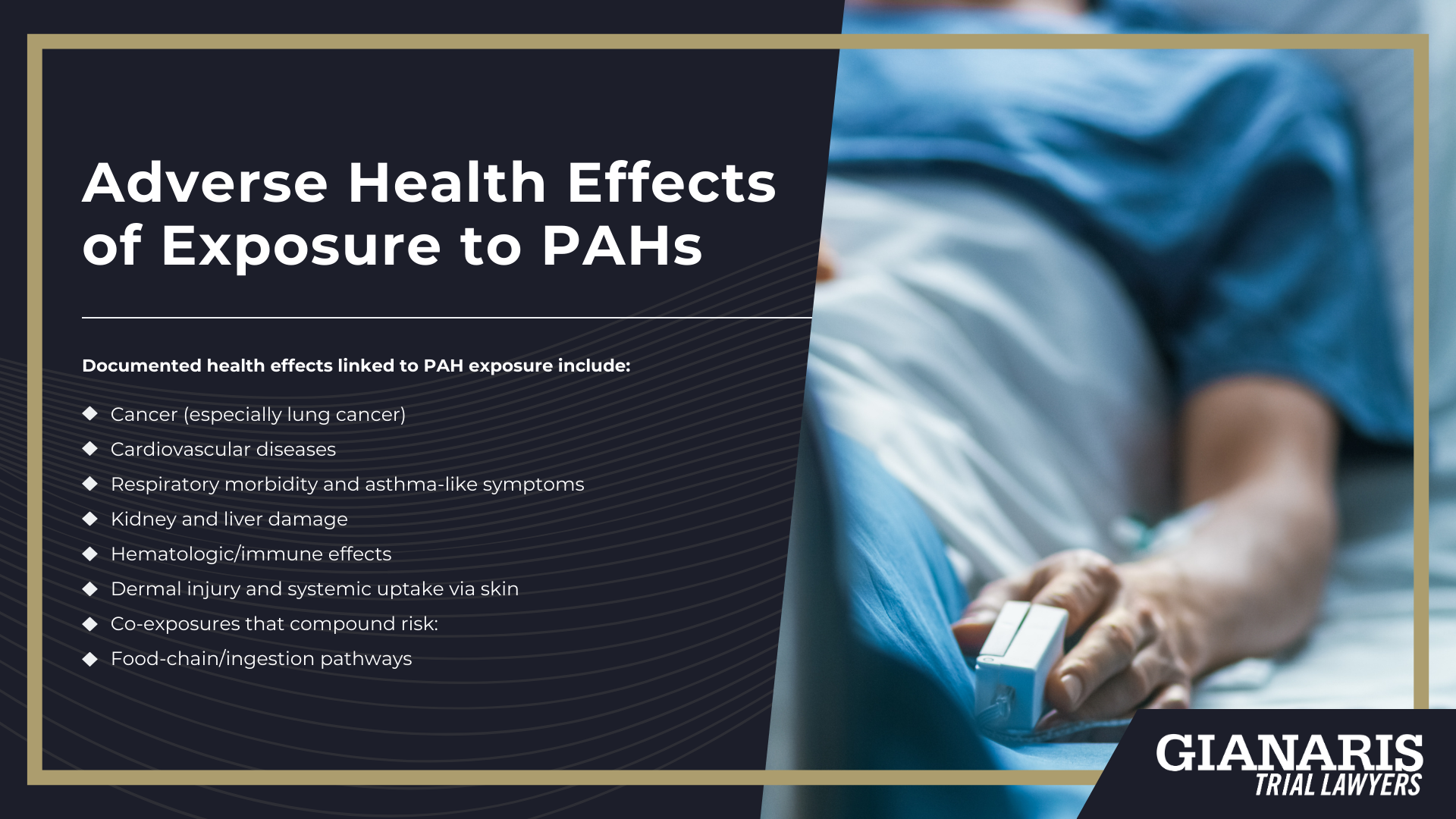
Documented health effects linked to PAH exposure include:
- Cancer (especially lung cancer): IARC identifies several PAHs as carcinogenic; occupational PAH mixtures (diesel/creosote/coal-tar) are linked to increased lung cancer development in exposed workers.
- Cardiovascular diseases: Diesel/PAH studies associate exposure with vascular dysfunction, arrhythmias, and other adverse cardiovascular outcomes.
- Respiratory morbidity and asthma-like symptoms: PAH-containing particulate matter reduces lung function and exacerbates airway inflammation and asthma-type complaints.
- Kidney and liver damage: Toxicological profiles document hepatic and renal adverse effects after PAH exposure, particularly with chronic or high-level contact.
- Hematologic/immune effects: Experimental and occupational data indicate PAHs affect bone marrow (hematotoxicity, immunosuppression) with measurable changes in biomarkers of exposure and effect.
- Dermal injury and systemic uptake via skin: Creosote/coal-tar work shows significant dermal exposure contributions to total dose (elevated urinary 1-OHP), even when airborne levels are controlled.
- Co-exposures that compound risk: PAHs mix with other organic substances and irritants (e.g., cigarette smoke/tobacco smoke) to amplify toxicity in real-world railroad settings.
- Food-chain/ingestion pathways: Environmental PAHs can enter the food chain; incidental ingestion (e.g., eating foods or hand-to-mouth contact in contaminated areas) adds to worker dose.
Together, these findings explain why PAH exposures in rail operations demand rigorous controls, monitoring, and medical follow-up, especially for crews working around diesel exhaust, creosote/coal-tar materials, and disturbed legacy soils.
What Job Roles on the Railroad are Most Susceptible to PAH Exposure?
Railroad workers face environmental exposure to PAH compounds through daily tasks that bring them into direct contact with diesel exhaust, creosote-treated materials, and contaminated soil.
Studies confirm that certain job roles consistently show elevated biomarkers of PAH uptake and greater associated health impacts, particularly when exposures are sustained over long careers.
Crews working in rail yards, on track maintenance, or inside shops may encounter PAHs through inhalation of exhaust, skin contact with treated ties, or dust inhalation when disturbing legacy coal-tar materials.

Job roles with higher susceptibility include:
- Locomotive engineers and conductors: Consistently exposed to diesel exhaust inside cabs and rail yards.
- Track maintenance workers (section crews): Handle creosote-treated wooden ties and disturb PAH-laden ballast or soil.
- Welders and machinists: Inhale fumes from welding arcs that can contain PAH byproducts in addition to metals.
- Car repair and shop workers: Work in enclosed or semi-enclosed areas where PAH concentrations from solvents, fuels, and exhaust may build up.
- Yard workers and switchmen: Frequently stationed in areas with dense diesel exhaust and localized PAH emissions.
- Bridge and structure crews: Work with coal-tar sealants, creosote timbers, and PAH-containing protective coatings.
Because these tasks often involve high levels of both airborne and dermal contact, workers in these positions carry some of the greatest risks for long-term adverse outcomes linked to PAH exposure.

